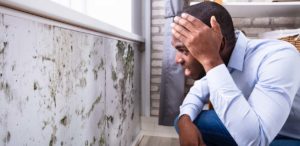 Need to remove some mold? Here is an expert’s brief for mold removal, from the professional mold remediation experts.
Need to remove some mold? Here is an expert’s brief for mold removal, from the professional mold remediation experts.
Mold growth is a major problem for any property owner. Apart from the fact that mold is gross, it’s also a health hazard. Mold grows in wet or damp sections of your property, compromising indoor air quality and posing a risk to the occupants’ health. Here is an expert’s brief on how to remove mold professionally.
1. Trace the sources of the moisture
All mold growths are caused by water leakage or a moisture problem. That’s why you should establish where the moisture comes from because mold spores will spread and grow at every place where there is moisture. The aim is to identify the source and use this information to find all the mold formations, including those that are not visible from the outside. The surfaces that often host mold include insulation, drywall, fabrics, tiles, and, wood.
2. Prepare a report and develop a remediation plan
After establishing the cause and scope of the mold problem, prepare a report and include photos and videos of the mold formation. The mold removal team uses the report to develop a remediation plan. The details include when work begins, the mold removal schedule, the individuals responsible for the remediation, tests to be done, and if there is a need for relocation. The report can also help in liability management for the property and inform future mold suppression strategies.
3. Determine the extent of mold growth
Mold grows in all damp surfaces in the home, so you need to calculate the extent of the contamination. Determining the severity of the contamination informs the approach you use for mold removal, clean up, and disinfection. The Canadian construction industry has guidelines for mold assessment procedures. The guidelines recommend three remediation levels based on the extent of the contamination and sensitivity of the affected areas.
4. Mold remediation
Mold remediation involves removing the existing mold while minimizing exposure and preventing future growth by rectifying the moisture problem. Based on the calculations, you can determine if you need remediation Level 1, 2, or 3. Some homeowners decide to handle Level 1 and 2 contamination on their own. Level 3 requires supervision by a qualified mold removal professional. The general steps for Level 1 and 2 involve:
- Solving the moisture problem to prevent future growths
- Isolating the contaminated area
- Applying mist to suppress dust
- Removing and disposing of all the contaminated materials
- Cleaning all the contaminated surfaces in accordance with level 1 and level 2 cleaning requirements
5. Evaluate the mold removal process
Check if the moisture problem has been solved by revisiting the property a couple of days after the remediation. Organize additional testing by a certified environmental testing agency to verify that the place is safe for occupation.
Touch With Care is an emergency restoration services company serving most of southern Ontario. Contact us for more guidance and professional assistance with mold removal.


